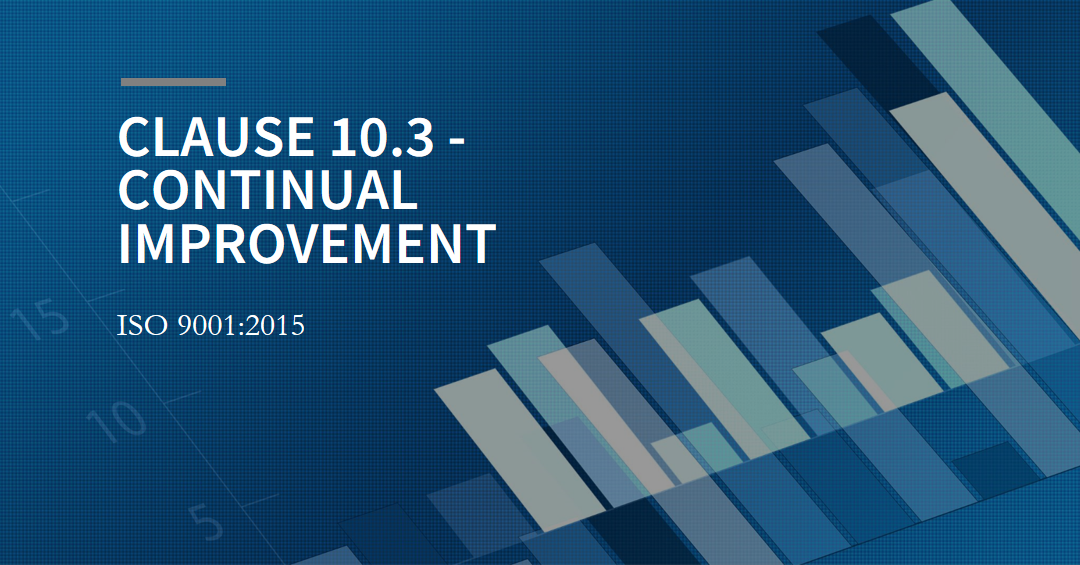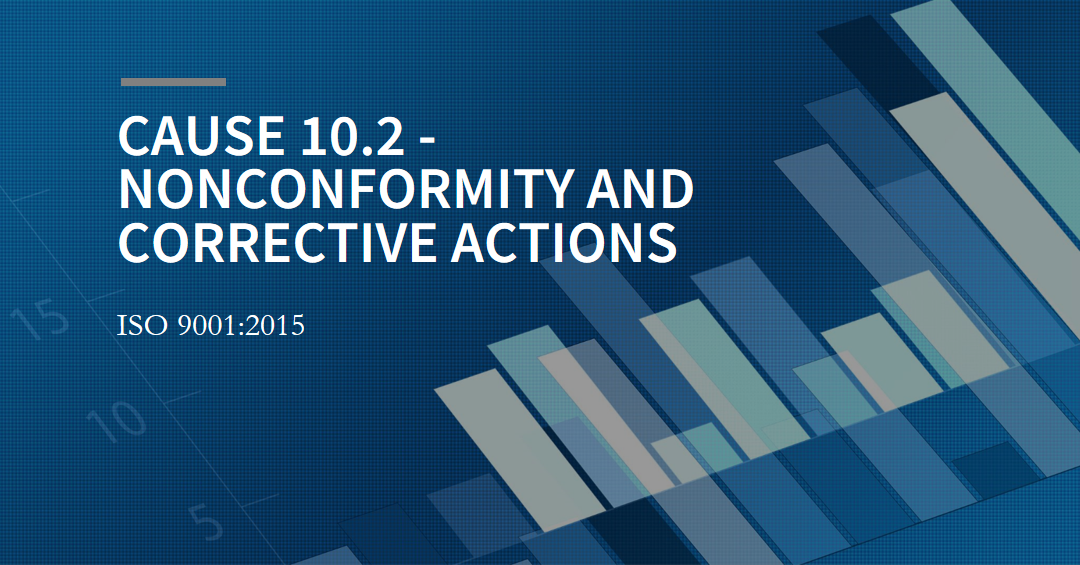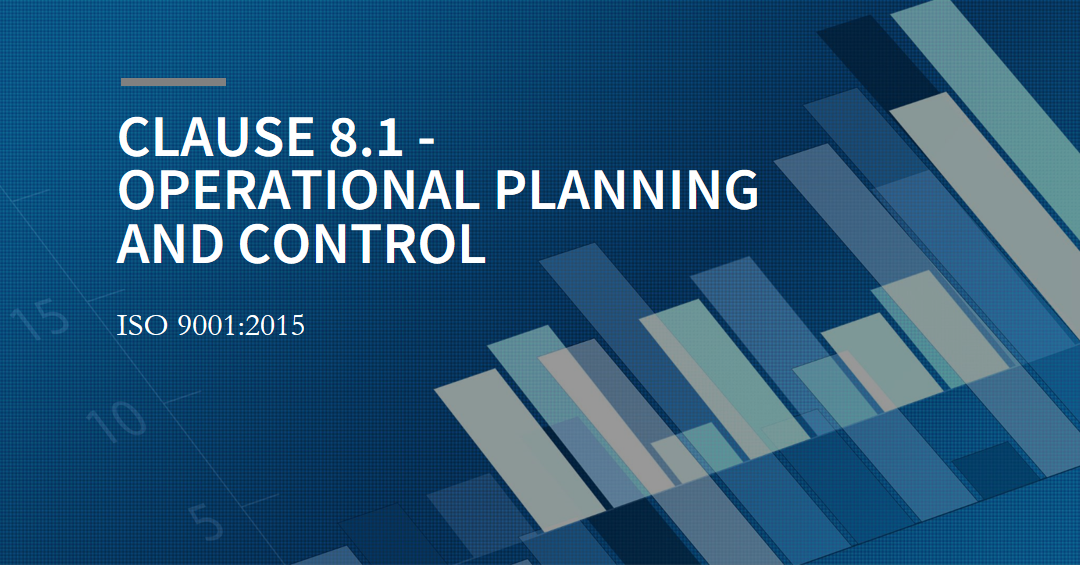
Introductory Overview of ISO 9001:2015 Clause 8.5
ISO 9001:2015 is an internationally recognized standard that outlines the criteria for an effective QMS. It is designed to help organizations ensure that they consistently meet customer and other stakeholder needs within statutory and regulatory requirements related to a product or service. Clause 8.5 specifically focuses on the production and service provision, forming the operational core of the standard.
The Framework of Clause 8.5
Clause 8.5 of the ISO 9001:2015 standard is structured to provide a systematic approach to managing and controlling the processes directly responsible for the creation and distribution of a product or service. It ensures that these processes are carried out under controlled conditions, leading to consistency in quality and customer satisfaction.
Detailed Breakdown of Sub-Clauses 8.5.1 to 8.5.6
This clause is further divided into sub-clauses, each addressing a key aspect of production and service provision:
- 8.5.1 Control of Production and Service Provision: Dictates the establishment of controlled conditions for production and service provision, including the availability of work instructions, suitable equipment, monitoring and measurement resources, and the implementation of release, delivery, and post-delivery activities.
- 8.5.2 Identification and Traceability: Requires the organization to identify outputs and maintain traceability when necessary to ensure the conformity of processes and products.
- 8.5.3 Property Belonging to Customers or External Providers: Outlines the need to care for customers' or external providers' property while it is under the organization's control.
- 8.5.4 Preservation: Ensures that the integrity of products is maintained during production, handling, storage, and protection.
- 8.5.5 Post-Delivery Activities: Covers the obligations that an organization has in terms of warranties, contractual obligations, and supplementary services post-delivery.
- 8.5.6 Control of Changes: Calls for a systematic approach to managing changes in production or service provision to prevent adverse effects on quality.
By adhering to the guidelines set forth in Clause 8.5, organizations can enhance their quality management processes, leading to products and services that not only meet but exceed customer expectations.
In-Depth Analysis of Clause 8.5 Sub-Clauses
Diving deeper into the world of quality management, let's explore each sub-clause of ISO 9001:2015 Clause 8.5 to understand the nuances that can make or break the product and service quality.
8.5.1 Control of Production and Service Provision
Controlled conditions are the cornerstone of consistent quality. This sub-clause emphasizes the creation of an environment where production and service provision are carried out under predefined practices and criteria. Here are the key components:
- Work Instructions: Clear and concise instructions must be available to ensure that operations are carried out correctly.
- Suitable Equipment: The provision of appropriate equipment, including hardware and software, is essential.
- Monitoring: Processes must be monitored at appropriate stages to verify that they meet the set criteria.
- Measurement Resources: Accurate measurement is vital for quality control, necessitating calibrated and verified monitoring and measuring resources.
Case Study: A manufacturing company implemented digital work instructions, which resulted in a 30% decrease in process deviations and a 25% increase in operational efficiency.
8.5.2 Identification and Traceability
This sub-clause is critical for managing quality risks. It requires organizations to:
- Identify: Label and track products throughout the production process.
- Trace: Maintain records that enable the tracing of products back to their raw materials, processing, and delivery stages.
Fact: Traceability is not just a quality measure but also a regulatory requirement in industries such as food, pharmaceuticals, and aerospace.
8.5.3 Property Belonging to Customers or External Providers
Organizations often handle property provided by customers or external providers, such as raw materials, components, or equipment. This sub-clause stipulates that such property must be:
- Identified: Clearly marked and recorded to prevent misuse or loss.
- Verified: Regularly checked for quality and suitability.
- Protected: Adequately safeguarded against damage or deterioration.
Quote: "Taking care of customer property is not just about preservation; it's about building trust and demonstrating commitment to quality." - Quality Management Expert
8.5.4 Preservation
Preservation ensures that the quality of products remains unchanged throughout the production cycle. This involves:
- Handling: Minimizing handling errors or damages.
- Storage: Storing products in conditions that prevent damage or deterioration.
- Protection: Shielding products from environmental conditions or contamination.
List:
- Proper packaging materials
- Controlled storage environments
- Regular inspections
8.5.5 Post-Delivery Activities
After delivering a product or service, the responsibility of an organization doesn't end. This sub-clause covers:
- Warranties: Management of warranty claims and repairs.
- Contractual Obligations: Fulfillment of any agreements made with customers.
- Supplementary Services: Provision of ongoing support, maintenance, or disposal.
Table: Post-Delivery Activities and Their Impact on Customer Satisfaction
8.5.6 Control of Changes
In a dynamic business environment, changes are inevitable. This sub-clause requires organizations to:
- Plan: Thoughtfully plan changes to production or service provision.
- Review: Assess the potential impact of changes on product quality.
- Document: Maintain records of changes and their effects on operations.
Bolded Point: Documented change management is essential for maintaining quality and for continuous improvement.
By understanding and meticulously implementing these sub-clauses, organizations can build a robust QMS that not only adheres to ISO 9001:2015 standards but also sets a foundation for excellence in product and service provision.
Implementing ISO 9001:2015 Clause 8.5 in Your Organization
Adopting ISO 9001:2015 Clause 8.5 is more than a mere compliance exercise; it's a strategic decision that can significantly enhance your organization's operational excellence. Here's how to implement this critical clause effectively.
Strategic Planning for Compliance
Strategic alignment is the first step towards Clause 8.5 compliance. This involves:
- Gap Analysis: Start by conducting a gap analysis to understand where your current processes stand against the requirements of Clause 8.5.
- Process Design: Based on the analysis, design processes that meet the controlled conditions stipulated by the clause.
- Policy Development: Develop and document policies that support the new processes and ensure they are communicated across the organization.
List of Strategic Planning Steps:
- Conduct a gap analysis.
- Design compliant processes.
- Develop supporting policies.
- Communicate changes organization-wide.
- Train employees on new processes and policies.
Resource Management for Quality Assurance
Effective implementation also depends on the adequate allocation of resources, which includes:
- Human Resources: Ensure that you have a team with the right skills and training to manage the quality of production and service provision.
- Infrastructure: Invest in the necessary infrastructure, such as tools, equipment, and technology, that facilitates compliance with Clause 8.5.
- Financial Resources: Budget for the costs associated with implementing and maintaining the changes required by the clause.
Case Study: A tech company invested in a new QMS software that streamlined their compliance with Clause 8.5, resulting in a 50% reduction in non-conformance issues over one year.
Training and Development Programs
Ongoing training is crucial to maintain compliance and foster a culture of quality. Consider the following:
- Customized Training Modules: Develop training programs tailored to the different roles within your organization.
- Continuous Learning: Encourage continuous professional development and learning about quality management best practices.
- Training Effectiveness: Regularly assess the effectiveness of your training programs to ensure they are meeting learning objectives.
List of Training Focus Areas:
- Understanding ISO 9001:2015 and Clause 8.5.
- Best practices in production and service provision.
- Handling customer property and change management.
- Preservation and post-delivery activities.
By strategically planning for compliance, managing resources effectively, and investing in your workforce's development, you can seamlessly implement Clause 8.5 and achieve operational excellence.
Overcoming Clause 8.5 Implementation Challenges
Implementing ISO 9001:2015 Clause 8.5 can come with its own set of hurdles. However, with the right approach, these challenges can be transformed into opportunities for improvement. Let’s examine some common obstacles and strategies to address them.
Common Obstacles in Meeting Clause 8.5 Standards
Organizations may encounter several challenges, such as:
- Resistance to Change: Employees may be resistant to altering established routines and processes.
- Resource Constraints: Limited budgets, personnel, or technology can hinder the implementation of the necessary changes.
- Lack of Expertise: The complexity of the standard may require specialized knowledge that the organization lacks.
List of Common Implementation Challenges:
- Employee resistance to change.
- Insufficient resources.
- Inadequate expertise.
Solutions and Strategies for Clause 8.5 Challenges
For each challenge, there are effective solutions:
- Change Management: Implement change management strategies to help staff understand the benefits of the new system and how it will improve their work environment.
- Resource Optimization: Look for ways to optimize existing resources and explore cost-effective solutions, like cloud-based QMS software that reduces the need for large upfront investments.
- Training and Consulting: Invest in training for staff to build in-house expertise or hire consultants who specialize in ISO standards to guide the implementation process.
Table: Strategies to Overcome Implementation Challenges
Case Study: A small manufacturing firm faced significant resistance to change when implementing Clause 8.5. By involving employees in the planning process and clearly communicating the benefits, they not only overcame resistance but also improved employee engagement and process ownership.
By proactively addressing these challenges with strategic planning and an inclusive approach, organizations can ensure a smoother transition to compliance with ISO 9001:2015 Clause 8.5.
The Role of Leadership in Clause 8.5 Compliance
Effective implementation of ISO 9001:2015 Clause 8.5 is not solely a task for quality managers and frontline employees; it requires strong leadership commitment from the top. Here's how leadership can influence successful compliance.
Management's Responsibility in Quality Management
Leadership must demonstrate a commitment to the QMS by:
- Setting the Tone: Leaders set the organizational culture and attitude towards quality. They should visibly support and participate in QMS activities.
- Providing Resources: It is management's role to ensure that the organization has all the necessary resources, from personnel to financial investment, to support the implementation of Clause 8.5.
- Establishing Clear Objectives: Leaders must define and communicate clear quality objectives that align with the requirements of Clause 8.5.
Quote: "Quality is never an accident; it is always the result of intelligent effort." – John Ruskin
Engaging Employees in Quality Practices
A key aspect of leadership is to engage employees in the process:
- Inclusivity: Involve employees from all levels in the planning and implementation process. This fosters a sense of ownership and commitment to the quality goals.
- Recognition: Acknowledge and reward contributions and improvements made by employees in the QMS. This encourages continuous participation and innovation.
- Communication: Maintain open lines of communication to address concerns, gather feedback, and share successes related to the QMS.
List of Leadership Actions to Engage Employees:
- Include employees in decision-making processes.
- Recognize and reward achievements in quality improvements.
- Communicate regularly about QMS performance and goals.
Essential Training to Understand and Execute Clause 8.5
Leaders must also ensure that their teams are well-equipped with knowledge and skills:
- Training Programs: Develop and provide access to comprehensive training that covers Clause 8.5 requirements and practical implementation.
- Mentorship: Encourage experienced staff to mentor others, creating a culture of shared knowledge and collaborative learning.
- Continuous Education: Promote ongoing education to keep up with the latest quality management standards and techniques.
Bolded Point: Leadership must not only endorse but actively drive the quality management initiatives for Clause 8.5 to be effectively implemented.
Leadership is the driving force behind the successful adoption of Clause 8.5. By setting an example and fostering a culture of quality, management can lead the organization to not just meet, but exceed the standards set by ISO 9001:2015.
Monitoring and Measuring Compliance with Clause 8.5
To ensure that the efforts put into implementing ISO 9001:2015 Clause 8.5 are effective, organizations must establish robust monitoring and measurement mechanisms. This enables continuous assessment and improvement of the QMS.
Utilizing Key Performance Indicators (KPIs)
Key Performance Indicators (KPIs) are crucial for tracking the effectiveness of Clause 8.5 implementation. Consider the following KPIs:
- Product Quality: Rate of non-conforming products, customer returns, or warranty claims.
- Process Efficiency: Time taken for product or service delivery, throughput rates, and process cycle times.
- Customer Satisfaction: Feedback scores, repeat business rates, and customer complaints.
List of Relevant KPIs for Clause 8.5:
- Rate of non-conforming products.
- Time to delivery.
- Customer satisfaction scores.
- Number of customer complaints.
- Process cycle times.
Audit and Review Processes for Continuous Improvement
Regular audits and reviews are critical to maintaining Clause 8.5 compliance:
- Internal Audits: Conduct periodic internal audits to assess the effectiveness of the processes related to product and service provision.
- Management Reviews: Hold management review meetings to evaluate audit findings, discuss improvements, and make decisions on changes to the QMS.
- Corrective Actions: Implement corrective actions to address any non-conformities or opportunities for improvement identified during audits or reviews.
Table: Audit and Review Cycle
Case Study: A service company implemented a quarterly audit cycle that led to a 40% improvement in service delivery times by identifying and addressing inefficiencies in their processes.
Bolded Point: Regular monitoring, auditing, and reviewing are essential practices for ensuring the sustainability and continuous improvement of the QMS.
By establishing KPIs and a structured audit and review process, organizations can maintain a high level of compliance with Clause 8.5 and foster a culture of continuous improvement.
Tools and Expertise for Achieving Clause 8.5 Compliance
Leveraging the right tools and tapping into expert knowledge can greatly simplify the path to ISO 9001:2015 Clause 8.5 compliance. These resources not only facilitate the implementation process but also enhance the efficiency and effectiveness of your QMS.
Technological Aids for Managing Compliance
In the digital age, technology plays a crucial role in managing and optimizing QMS processes. Consider these tools:
- QMS Software: There are specialized QMS software solutions that automate workflow, document control, and provide real-time data analysis.
- Project Management Tools: These can help keep track of implementation progress, assign tasks, and manage timelines effectively.
- Online Training Platforms: Utilize e-learning systems to deliver consistent training and education on ISO 9001:2015 and Clause 8.5.
List of Technological Aids:
- QMS software with process automation features.
- Project management and collaboration platforms.
- E-learning systems for ISO training.
Consulting ISO Experts and Certification Bodies
Expert guidance can significantly ease the compliance journey:
- Consultants: ISO consultants possess the expertise to help tailor the standard's requirements to your organization's specific needs.
- Certification Bodies: Working directly with certification bodies can provide insights into the audit process and help you understand what auditors look for.
- Industry Forums and Groups: Participate in forums and groups where you can share experiences, ask questions, and learn from other organizations' journeys to compliance.
Quote: "Expertise in ISO implementation is not just about meeting standards; it’s about embedding quality into the DNA of your organization." – ISO Consultant
Table: Expert Resources and Their Benefits
Case Study: A healthcare provider partnered with an ISO consultant who specialized in healthcare standards, resulting in a seamless Clause 8.5 implementation and successful certification on their first attempt.
Bolded Point: The combination of advanced tools and expert assistance provides a powerful boost to any organization aiming for ISO 9001:2015 Clause 8.5 compliance.
By incorporating these tools and resources into your Clause 8.5 implementation strategy, you can reduce complexity, increase efficiency, and position your organization for a successful ISO certification.
Conclusion
ISO 9001:2015 Clause 8.5 is more than a set of guidelines; it's a roadmap to delivering consistent, high-quality products and services. By understanding and effectively implementing this clause, your organization can demonstrate its commitment to excellence and gain a competitive edge. Remember, the journey to compliance is ongoing, and continuous improvement is key. Embrace the challenge, and let Clause 8.5 guide your quality management to new heights.
Call to Action:Evaluate your organization's current compliance with Clause 8.5, and consider reaching out for professional consultation to ensure you're on the right track. For further assistance or to begin your ISO certification journey, contact Encompass Consultants for expert support and resources.
Would you like to add or adjust any sections, or shall we wrap up this comprehensive blog post on ISO 9001:2015 Clause 8.5?
















